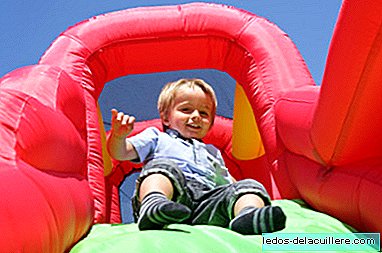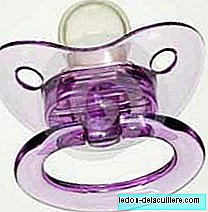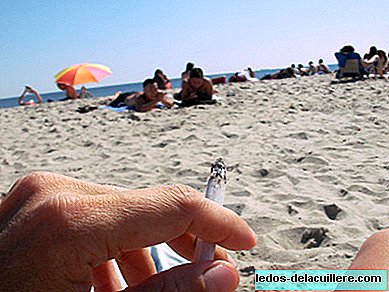
In the fairs, in the parks, in the popular festivals, in the private celebrations ... There are many places where the bouncy castles that attract our children like magnets are raised. But, although they are so close at hand, we must not forget that inflatable castles can be dangerous if not used by taking certain precautions.
The most common hazards that occur are injuries from falls (inside the castle or out) and clashes between children of different age and size, which scares most if there are too many children playing. In addition, if the inflatable has a bad anchorage it can move or suffer the consequences of a strong wind gust: that the children leave the castle dismissed.
We have long warned you of the dangers of inflatable castles, and now it is the Spanish Association of Pediatrics that, from its web pages, wonders if these inflatables are a safe fun. They conclude that, if used correctly, they can guarantee the safety of children. But of course, you have to follow certain recommendations that are often forgotten or simply ignored.
And know about common injuries that occur in inflatable castles scary Fractures (more recent in children younger than five years) and sprains often occur in children, and bruises, bruises and burns caused by rubbing with the castle canvas are also frequent. The most affected regions are the extremities, both upper and lower, followed by the neck and head. There may even be traumatic brain injuries, rare, but more serious.

Tips for the good use of inflatable castles
How can you minimize the risk of injury? Following certain recommendations, both at the time of assembly and at the time of monitoring or use of children.
- Bouncy castle mount: Only trained personnel may assemble and disassemble the castle; tie ropes strong enough will be used, as well as suitable anchors that prevent the ropes from slipping and loosening. At least six anchor points will be established; it should be placed on a flat surface, removing rocks, sticks or possible protruding elements; the security perimeter around the castle will be a minimum meter; it will be placed away from tree branches and power lines.
In case of mounting inside, make sure that the castle is far from the walls and that the roof is several meters above the top of the castle. There must be a soft surface at the entrance / exit of the castle.
Proper use: the entrance and exit must be kept clear at all times; before climbing the castle, shoes, jewelry, glasses, as well as sharp objects will be removed; no food, drink, or any kind of pet will be uploaded; You will not be able to do somersaults, abrupt games, or climb or hang on the walls as far as possible, children will be kept away from the entrance and walls; if the castle begins to lose air the activity will stop; In case of adverse weather (rain, wind ...) it is also convenient to stop the activity.
Prevention measures: the activity will be supervised at all times by a responsible adult to verify the safety of the installation and the correct use by the children; the number of users will be limited to that stipulated by the manufacturer (according to the dimensions of the castle); Sessions will be held by age and weight groups.
Some of the above measures seem easier to apply if it is a "paid" attraction, with some people responsible and accustomed to its use, who are supposed to have a permit to mount that castle. But in the case of private celebrations and without a monitor, it is more complicated for standards to be met.
Pediatricians say that in recent years there has been a significant increase in the number of children treated in emergency services for injuries caused as a result of play on these devices. I hope that, little by little, the people who ride these attractions and parents are more aware of the dangers of inflatable castles If they are not used well.












